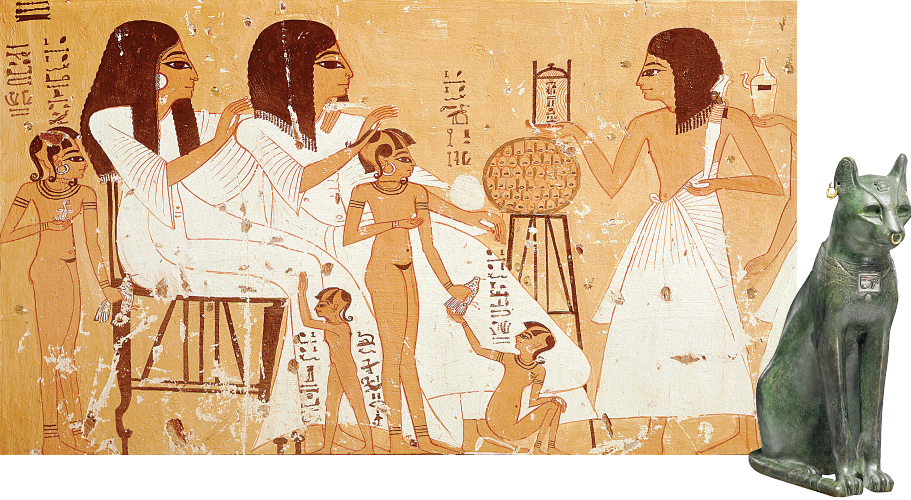Egyptian Family Life
The lives of all Egyptians centered around the family. Marriage was a business arrangement, just as in Mesopotamia, arranged by the couples’ parents, and seems to have taken place at a young age. Once couples were married, having children, especially sons, was a high priority, as indicated by surviving charms to promote fertility and prayers for successful childbirth. Boys continued the family line, and only they could perform the proper burial rites for their father.
Wealthy Egyptians lived in spacious homes with attractive gardens and walls for privacy. (See “Picturing the Past: Egyptian Home Life.") Poorer people lived in cramped quarters. Excavations at a city now called Tell el Amarna show that residents’ houses were about 16½ feet wide by 33 feet long. The family had narrow rooms for living, including two small rooms for sleeping and cooking. These small houses suggest that most Egyptians lived in small family groups, not as large extended families. The very poor lived in hovels with their animals.
Life in Egypt began at dawn with a bath and clean clothes. The Egyptians bathed several times a day because of the heat and used soda ash for soap. Rich and poor alike used perfumes as deodorants. Egyptians generally wore linen clothes, made from fibers of the flax plant. Because of the heat, men often wore only a kilt and women a sheath.
Marriage was apparently not celebrated by any ritual or religious act; it seems to have been purely a legal contract in which a woman brought one-

CONNECTIONS: Based on your reading, how might an image of a poor family differ from this depiction?
Ordinary women were expected to obey their fathers, husbands, and other men, but they possessed considerable economic and legal rights. They could own land in their own names and operate businesses. They could testify in court and bring legal action against men. Information from literature and art depicts a world in which ordinary husbands and wives enjoyed each other’s company alone, and together with family and friends.